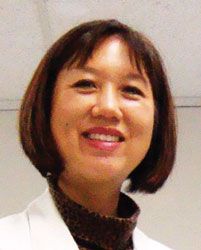Publication
Article
Oncology Live®
Turmeric Ingredient Inhibits Kinase in Cancer Pathway
Author(s):
If IKK kinase, a group of inhibitory proteins, activity is not regulated properly, tumors in the body have the ability to migrate and proliferate.

Marilene Beth Wang, MD
Certain key cellular processes such as stress response and inflammation are closely linked to the nuclear factor kappa ß (NFKß) pathway, with signaling affected by intracellular factors such as growth factors, infections (bacterial or viral), or oxidative stress.
The NFKß pathway is maintained in the cytoplasm by the IKK kinase, a group of inhibitory proteins. However, if IKK activity is not regulated properly, tumors in the body have the ability to migrate and proliferate.
The key to controlling IKKß, a catalytic subunit of IKK, may lie in a common spice.
Marilene Beth Wang, MD, a researcher at the Jonsson Comprehensive Cancer Center at the University of California, Los Angeles (UCLA), is senior author of a pilot study on curcumin, a major component of the spice turmeric, which was published in Clinical Cancer Research in September.
Wang, who also is a head and neck surgeon, and colleagues focused on curcumin’s ability to inhibit IKKß and suppress the expression of pro-inflammatory cytokines in patients with head and neck squamous cell carcinoma (HNSCC).
The study analyzed saliva that was collected before and after 21 patients chewed curcumin tablets totaling 1000 mg. IKKß activity was measured after protein was extracted. In addition, levels of interleukin-6 (IL-6) and IL-8, 2 cytokines involved in essential cell development, were measured to determine the inhibitory effect of curcumin on cytokines.
The study found that the IKKß activity in salivary cells of HNSCC patients was reduced after taking the curcumin treatment (P <.05). The researchers saw a significant reduction of IL-8 levels (P <.05) in post-curcumin samples from patients with dental caries, but the data on reduced IL-8 expression in post-curcumin samples of HNSCC patients did not reach statistical significance.

Curcumin is a natural phenol found in the spice turmeric.
The inhibition of IKKß correlated with reduced expression of a number of cytokines and could be a useful biomarker for determining the effect of curcumin in head and neck cancer patients.
“In the clinical setting, high doses of curcumin along with a longer treatment time period may be necessary to achieve a suppressive effect on IKKß kinase activity, and on the expression of inflammatory cytokines,” the study’s authors wrote.
“Even though high doses of oral curcumin are well tolerated in humans, there is poor absorption from the gastrointestinal tract,” they wrote. “Hence, future studies need to be conducted to not only determine the maximum tolerated dose of curcumin, but to also find optimal delivery methods of curcumin that would more effectively treat patients with head and neck cancer.”
Kim SG, Veena MS, Basak SK, et al. Curcumin treatment suppresses IKKß kinase activity of salivary cells of patients with head and neck cancer: a pilot study. Clin Cancer Res. 2011;17(18):5953-5961.









